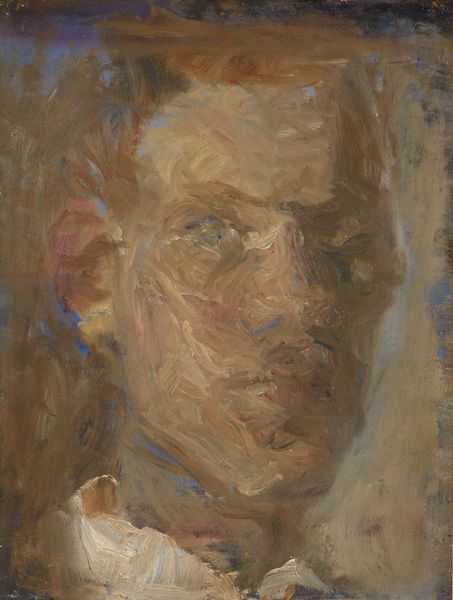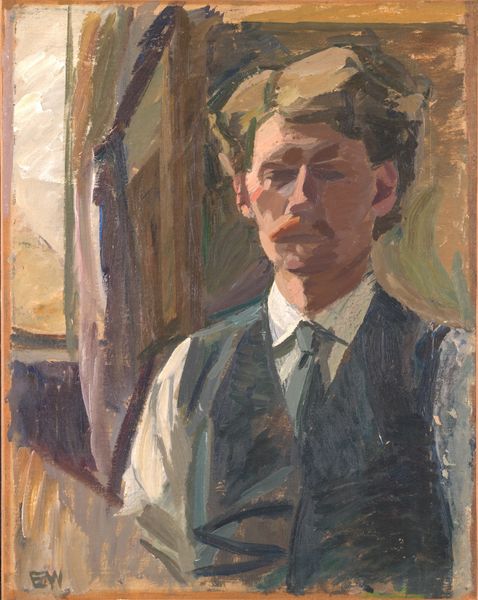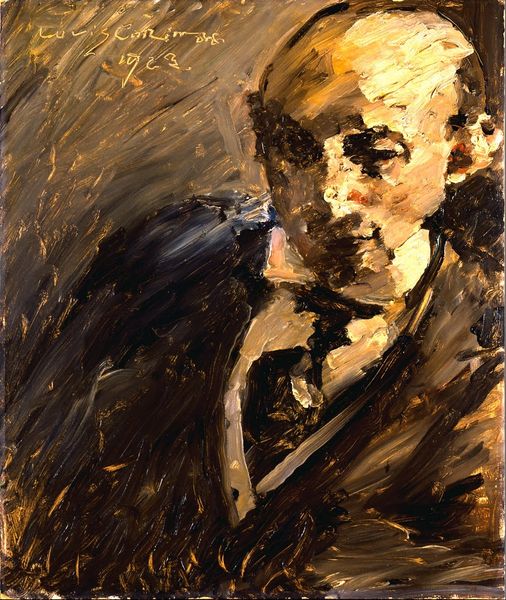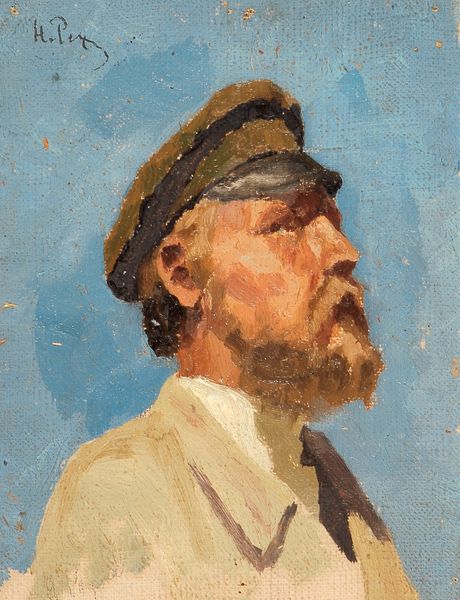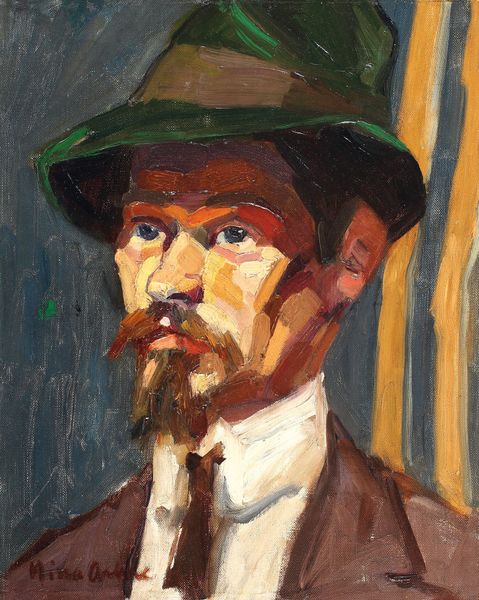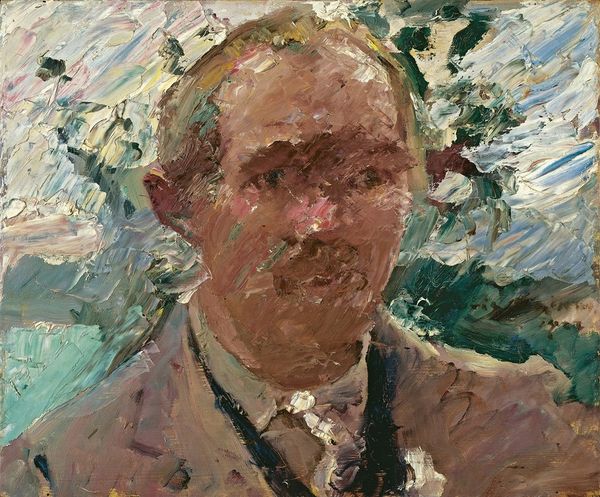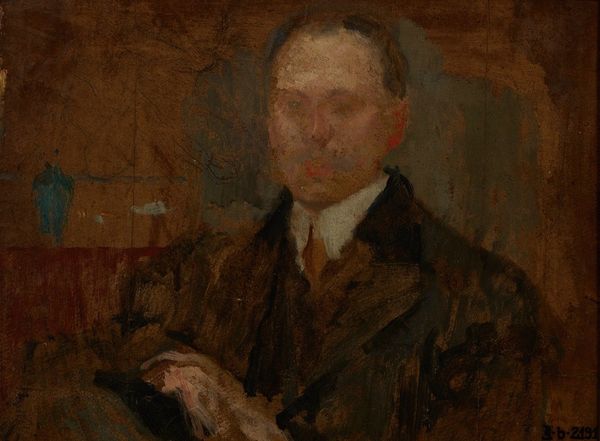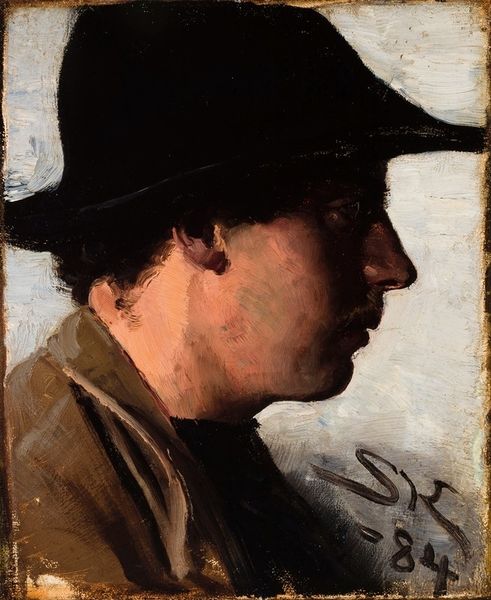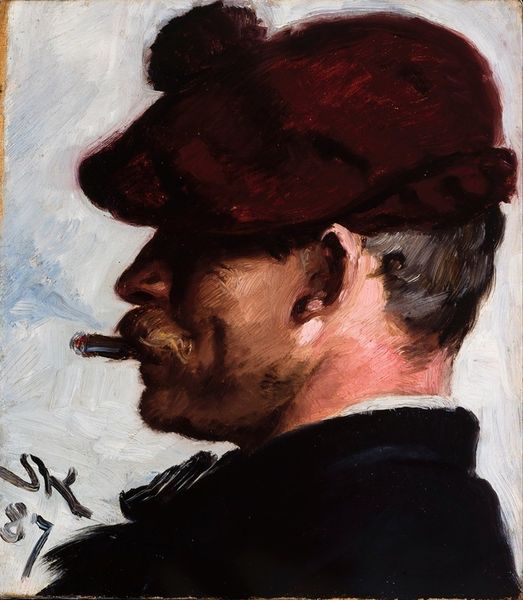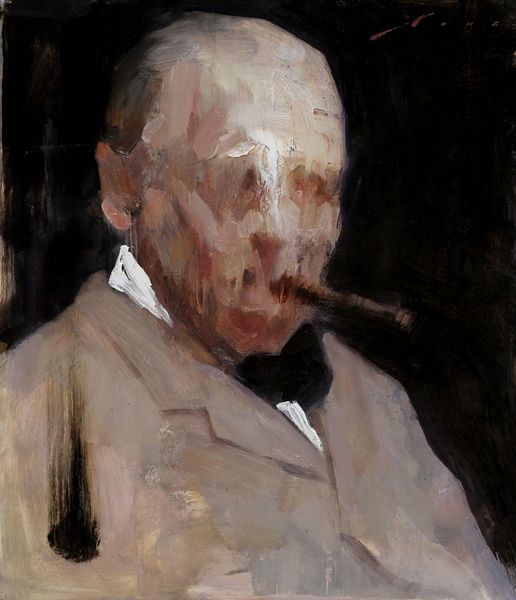
painting, oil-paint, canvas, impasto
#
portrait
#
self-portrait
#
painting
#
oil-paint
#
oil painting
#
canvas
#
impasto
#
expressionism
Dimensions: 36.5 cm (height) x 38.5 cm (width) (Netto)
Curator: Welcome. We are looking at Karl Isakson's striking "Portrait of the Painter Edvard Weie," a piece that occupied the artist between 1893 and 1922. It resides here at the SMK, painted in oil on canvas. What strikes you first about it? Editor: The intensity! It's raw, almost unfinished. The colours, particularly in the face, are so bold and the brushstrokes so visible. It gives a strong sense of immediacy. Curator: Indeed. Consider Isakson’s materials. Oil paint allows for that rich impasto technique. You can practically trace the movement of his hand, layering colour upon colour to construct Weie's likeness. And notice the visible canvas weave beneath – a testament to the labor involved in preparing the support itself. Editor: The visible weave almost negates the illusion of depth, doesn’t it? It flattens the image, making us acutely aware of the picture plane. The restricted palette and the way the forms are built up also reminds me of early expressionist portraits, where conveying emotion is more important than precise representation. Curator: Expressionism serves Isakson well here. However, remember that material availability impacted his colour choices. The painting process also reflected the economic realities of the artist’s life. Editor: Absolutely. And perhaps this approach mirrors Weie’s own artistic sensibilities too? It’s as if Isakson is not just painting a portrait, but also suggesting Weie's internal state, perhaps his struggles and the raw energy of his creativity. It makes me wonder what their relationship was like. Curator: Precisely. Art making, displaying artist collaborations, all influence the viewer's experience of the work and it is these networks of support and collaboration that can offer a crucial perspective for viewing the artwork itself. The social and cultural context certainly enriched and shaped it. Editor: So true. Examining form has allowed a more empathetic and historically richer understanding. Thank you. Curator: My pleasure. Viewing artworks from many angles creates the richest understanding of it, of art production in general and helps connect it to our modern life.
Comments
No comments
Be the first to comment and join the conversation on the ultimate creative platform.
